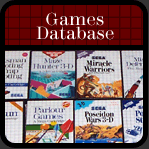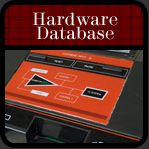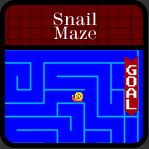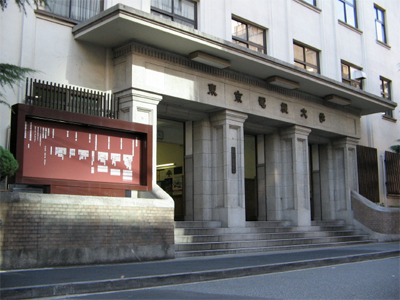 |
||
|---|---|---|
| Tokyo Denki University |
Steve was an programmer from Sega's early arcade game industry who eventually moved to the United States and worked for research and development, among other positions. As usual, starting from the beginning will give you a clear picture of what he's done. His first experience with video games seems to be the same as most from his time, Pong. As a college student, he played Pong and eventually created his own version with an LSI (large-scale integration) chip. In case you're wondering, LSI chips were one of the major steps of the silicon revolution that led to microprocessors as we know them today. While still in Japan, Steve went to a private, well-known university for electronics called Tokyo Denki and graduated in 1977 with a BS in electrical communication, working primarily with radio technology. In addition to his degree, he was also spending time studying computer hardware and programming, which became his first step towards the field of video games.
While in his final year at Tokyo Denki, Steve saw an ad for a position at Sega on a school bulletin board. It read, "Looking for engineers. Applicants have a chance to visit our parent company in the US." Steve applied and was hired as a hardware engineer with his degree. His first position with Sega involved working with electronics, since this had been his primary focus in school. His major work while in Japan involved localizing various arcade games for the US market; in particular setting the PCB manufacturing and building cabinets.
Two years after this, and with some experience under his belt, he was then given the task of programming his first arcade game. In case you're wondering, during the creation of the SG-1000, Mark II and Mark III, Steve was working in the arcade division, so he had no part in these developments. He was aware of their progress, but remembered nothing else about them. However, it should be stated, most of the ideas in his arcade titles were eventually altered for these systems and eventually the Master System, though he played no part in these events; you'll find out about them later. Let's check out his early titles before we move on to the SMS.
Back in the early days when arcades were where most people played video games, the programming teams at Sega up through the 80s used an internally developed editor, linker and assembler, which worked on the computer's own hardware. While consoles were beginning to appear, they used 'in-circuit emulators' to develop games simultaneously for the arcade and home. Here is an example of how an ICE system would have looked.
 |
||
|---|---|---|
| In-Circuit Emulation Hardware |
So there's an exmaple of some of the components of an ICE above. You have, starting from the left, cables to link to the board you see in the middle and then to a unit that would display the code on a computer screen to check for errors, as you see on the right. ICEs enabled programmers to test games in order to check code before actually manufacturing chips. These emulators just mimicked what was done by CPUs. If programmers simply wrote the code and then produced the games, there would be no way to tell what caused an error if one appeared, so ICEs saved tons of time and money because testing could be done before production. That was their purpose. Teams usually consisted of three programmers, two artists and one person to write music. After each team was organized, they got to work. It was difficult and usually took around 6 to 8 months of 14-hour days with no time off in order to get a title up and running. If you're wondering why home-brew titles are so hard to make, that should give you an idea. Artists used simple 'dot design' software and there were no real 'musicians,' simply people who worked on music.
In such a team, Steve's first title was 'Tranquilizer Gun,' released in June of 1980, which he worked on as sub-programmer. His involvement was minimal in the process; he wrote only the subroutine for the movement of the 'hunter' character the player controls. Tranquilizer Gun's gameplay stemmed partially from an earlier Sega title, 'Cartoon Gun,' and involved controlling a hunter who comes up to a hedge-maze in a bus. Your task is to stun animals that appear in the maze and drag them back to the bus, receiving various points depending on the type of animal and your usage of darts. Some animals take more darts than others and they have a tendency to jump out suddenly from hedges, which the player has no ability to enter.
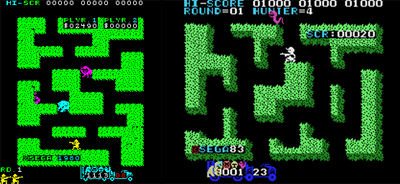 |
||
|---|---|---|
| Screenshots from Tranquilizer Gun and Safari Hunting |
This little bit added an element of surprise to what was otherwise a basic, maze-crawl game. Interestingly, considering what was out at the time, there are no levels in Tranquilizer Gun, only continuous play until you lose all your chances. It was eventually ported to the SG-1000 as 'Safari Hunting,' so considering how rare the cabinet is, and if you want to actually play it at home, you've got a way to do it. And if the thought crossed your mind we'll get to it right now; it was partially behind the idea of 'Safari Hunt,' but little more than concept. Tranquilizer Gun was then followed by the following, in order of their release; Space Trek, Space Odyssey, Monster Bash, Turbo and Sinbad Mystery.
 |
||
|---|---|---|
| Comparison of Space Trek and Global Defense |
 |
||
|---|---|---|
| Comparison of Space Odyssey and Transbot |
 |
||
|---|---|---|
| Comparison of Space Odyssey and Astro Warrior |
Space Trek, like Tranquilizer Gun, was also released in June of 1980. If you remember how much time they worked, you can essentially assume he worked day and night on these games. Space Trek is a basic space shooter similar to Galaga or Space Invaders with some different features including bosses and alternating waves of enemies. Ideas used in it would eventually be recycled to create 'Global Defense.' If you look at the pictures above, you should see the planet in the background of both standing out. Following Space Trek Steve worked on Space Odyssey, which was released in March of 1981. Space Odyssey was another space shooter, but this time mixing vertical and horizontal gameplay, alternating for different levels. Its design was partially behind the idea of two titles for the Master System, Astro Warrior and TransBot. Look above to see what I mean, the similarities should be obvious. After this, Steve followed with Turbo, his most important contribution to the history of arcade games.
Next Page


